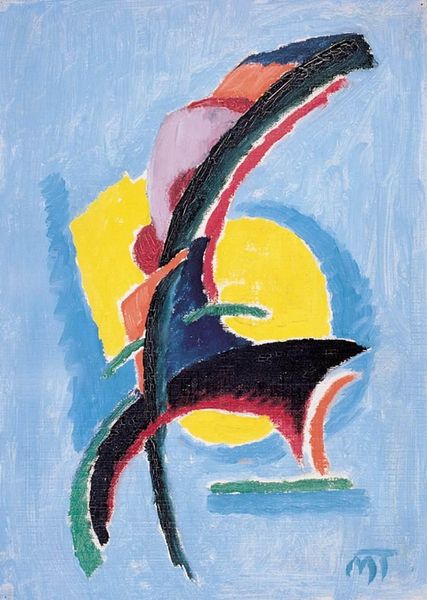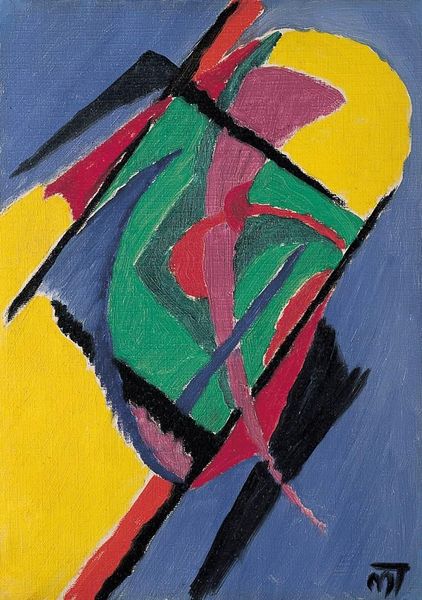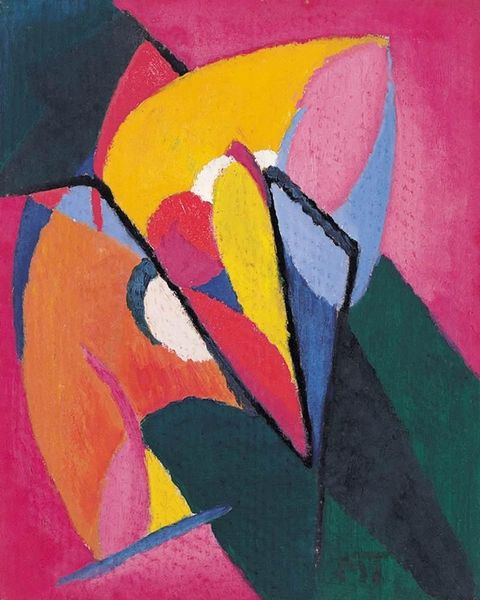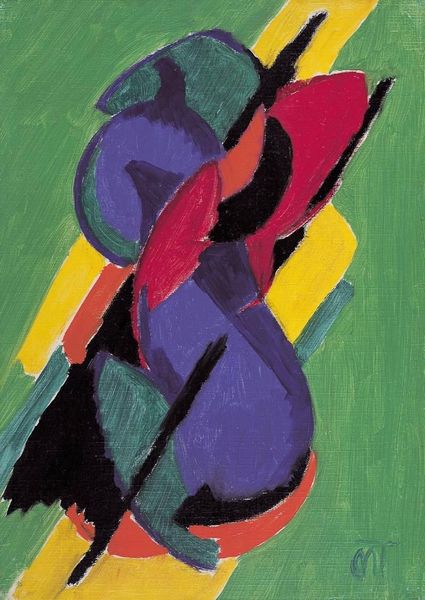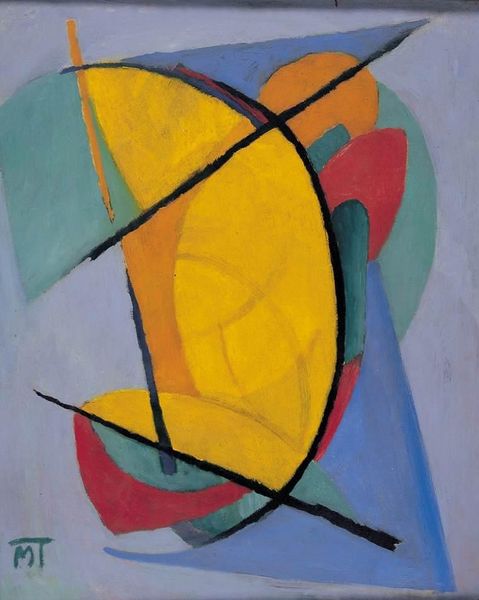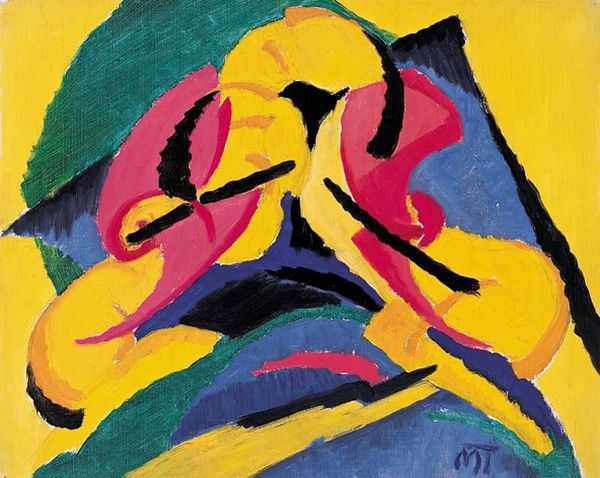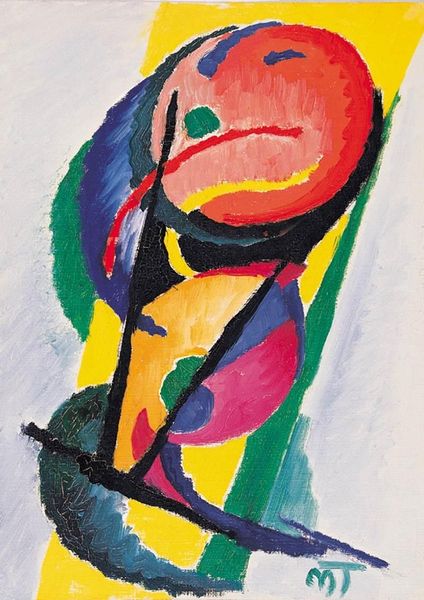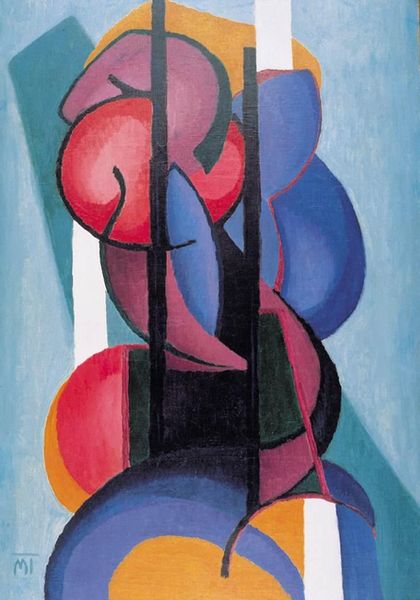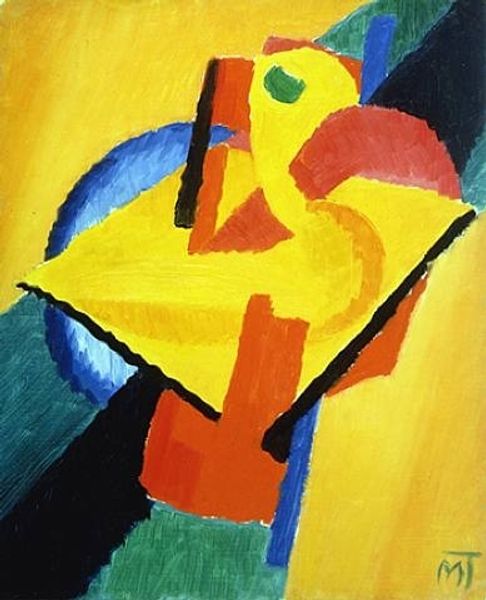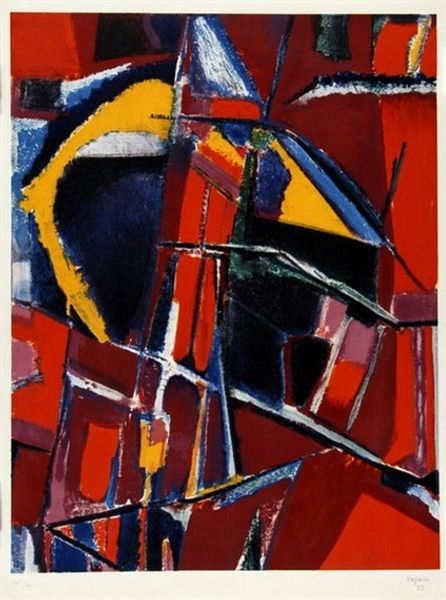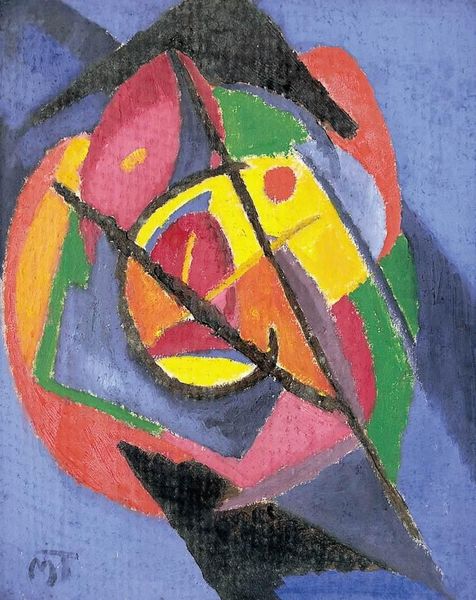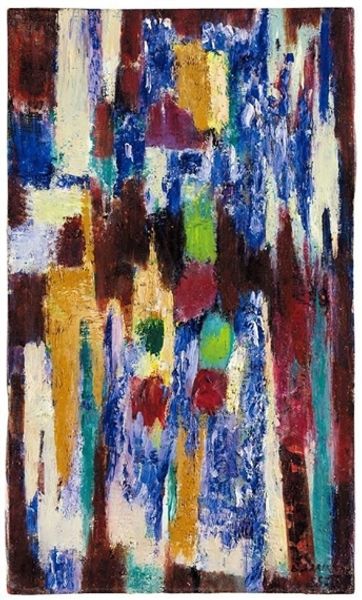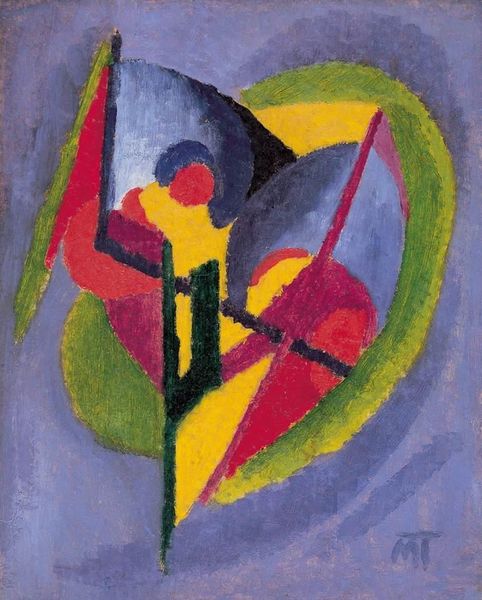
Copyright: Public domain US
Editor: Here we have János Mattis-Teutsch’s "Composition," painted in 1923. It's an oil painting, full of geometric shapes and vivid colors. I find it incredibly striking; the color choices are quite bold, almost Fauvist, yet it’s distinctly Expressionist. What are your initial thoughts on this piece? Curator: Considering the socio-political context of 1923, particularly in Eastern Europe, Expressionism was often a visual language for expressing anxieties about societal upheaval and the psychological impact of rapid modernization. Do you notice how the sharp angles and colliding forms create a sense of unease, a visual dissonance? Editor: Yes, now that you mention it, the clashing shapes and colors definitely suggest a certain tension. The black streaks also add to that feeling. Is it meant to be jarring? Curator: Potentially. Mattis-Teutsch, deeply involved with the avant-garde movements of his time, might be using abstraction not just for aesthetic purposes, but to challenge the viewer, to mirror the disorienting experience of living in a world undergoing dramatic shifts. Notice how form itself becomes a battleground. What do you make of that black circle amidst all the other colorful elements? Editor: I see it almost as an absence or a void within all the vibrant activity around it. A sort of symbolic representation of something missing or lost? Curator: Exactly. That reading aligns with how many artists of the time grappled with the perceived loss of tradition and spiritual certainty in the face of modernity. The Expressionists actively sought to depict inner emotional states through abstraction, using non-representational forms to communicate something beyond the visible world. This piece isn’t just about pleasing aesthetics. Editor: So it’s almost a commentary on the cultural anxieties of the time, presented through clashing colors and chaotic shapes? Curator: Precisely. It's a powerful example of how abstract art can be deeply intertwined with the historical and social forces shaping its creation. Editor: That really changes how I see it. I was focusing on the aesthetic, but now I recognize that the historical context brings another level of meaning to this seemingly abstract painting. Curator: Understanding the interplay between art and its historical moment provides such deeper insights.
Comments
No comments
Be the first to comment and join the conversation on the ultimate creative platform.
